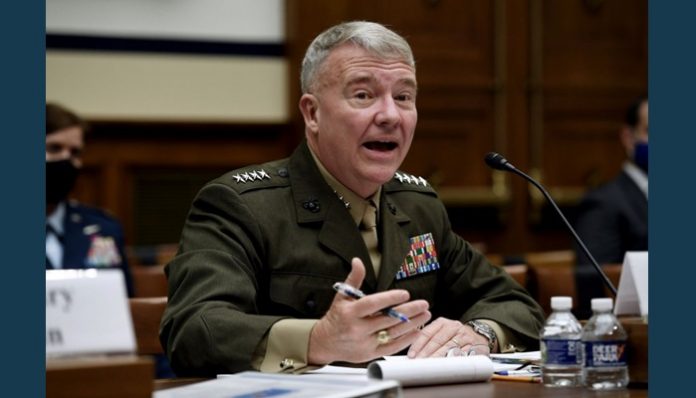
Sept. 29 (UPI) -- Three top U.S. military officials told Congress on Wednesday that they knew within hours of a U.S. drone strike in Kabul last month that civilians were killed, but it was days before they learned the target was made in error.
The Defense Department launched the attack Aug. 29, three days after an explosion at the Kabul airport killed dozens of people, including 13 U.S. Marines, during the evacuation of the capital. The Pentagon believed it was targeting at least one Islamic State-Khorasan Province member and eliminating another threat on the airport when it carried out its drone strike.
The Pentagon announced Sept. 17, though, that the vehicle it struck was not linked to ISIS-K and instead belonged to a worker for Nutrition and Education International, an aid group. Ten civilians died, including seven children.
U.S. Central Command Gen. Frank McKenzie answered questions about the strike by members of the House Committee on Armed Services. The hearing came one day after McKenzie, Defense Secretary Lloyd Austin and Joint Chiefs of Staff Gen. Mark Milley also testified before a Senate panel.
"Well, so, we knew the strike hit civilians within four or five hours after the strike occurred," McKenzie said. "And U.S. Central Command released a press release saying that. We did not know the target of the strike was an error, a mistake until some days later, but we knew pretty soon."
Milley, meanwhile, told the panel that former President Donald Trump originally signed an order in November to evacuate U.S. troops by Jan. 15, 2021, but the order was later rescinded. Milley said he wasn't consulted on the order.
Milley and McKenzie said they initially didn't plan to evacuate large numbers of Special Immigrant Visa holders -- that planning process didn't begin until early spring 2021.
"We had a plan to bring out mainly American citizens and people associated with the Embassy," McKenzie said. "Planning later began to encompass the larger population, the at-risk Afghan population, the SIV population."
Milley said the military carried out multiple rehearsals and exercises to practice for the evacuation and withdrawal of U.S. forces process starting in April.
Speaking on the threats left behind after the United States completed its withdrawal Aug. 31, Austin said thousands of Taliban prisoners were released as part of the February 2020 Doha agreement, many of whom rejoined the ranks of the Taliban.
Milley added that al-Qaida or ISIS could regain in strength in the coming months or years.
"It's a real possibility in the not too distant future, 6, 12, 18, 24, 36 months, that kind of timeframe for reconstitution of al-Qaida or ISIS and it's our job now, you know, under different conditions, but it's our job to continue to protect the American citizens against attacks from Afghanistan," he said.






